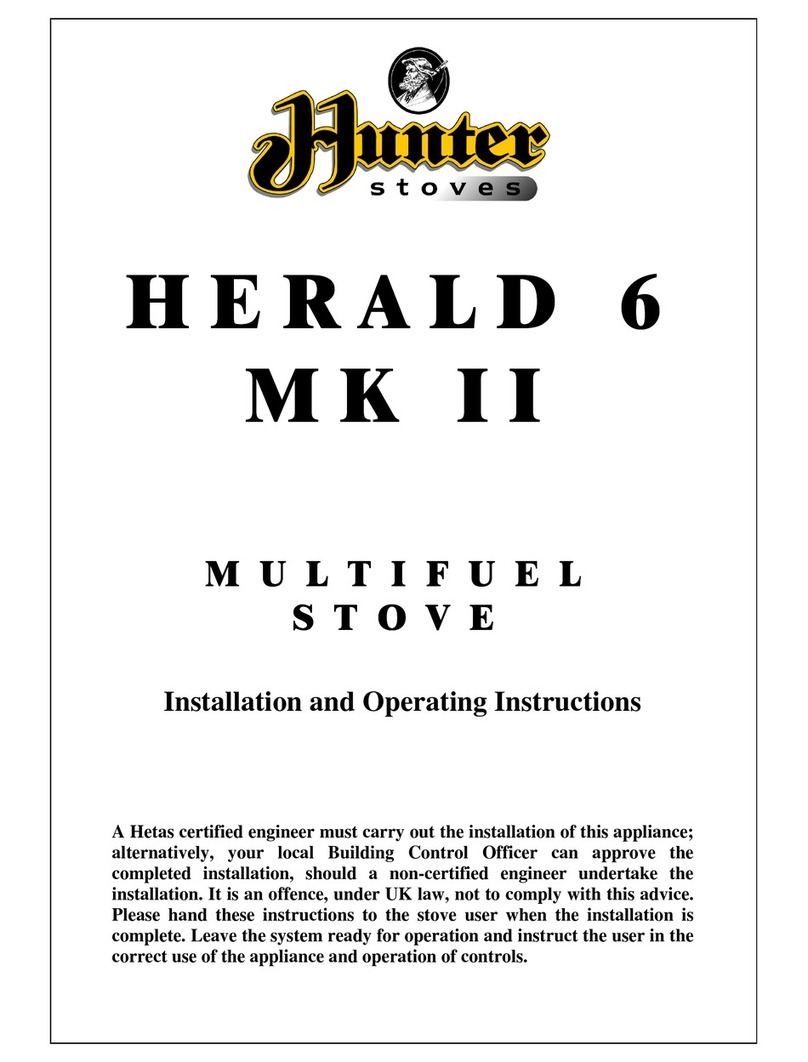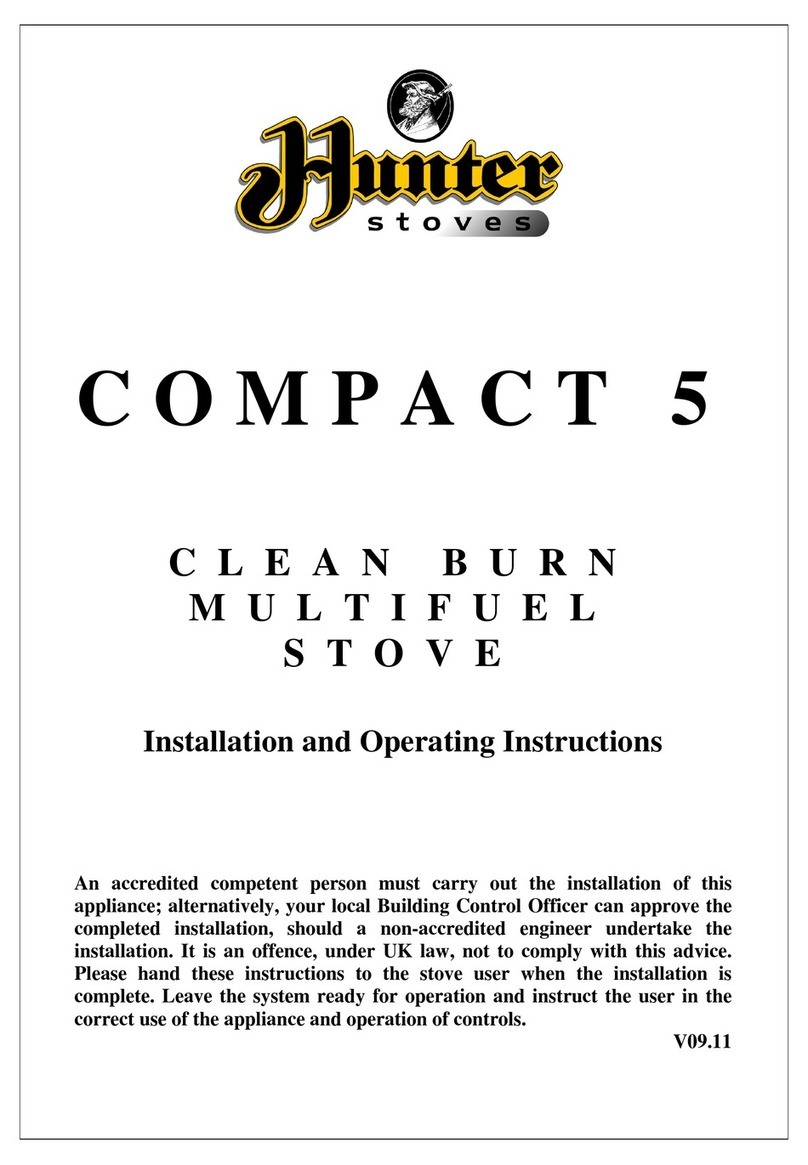
Primary Air
The Sliders in each Door control the Primary air.
This provides a conventional air draught to the bed of the fire.
The controls are open when the Sliders are pushed towards the outside of the Stove.
Secondary Air
Secondary air is controlled via the slider above the doors, it is
this “Airwash” that keeps a clean and uninterrupted view of
the fire.
Tertiary Air
Tertiary air aids in good secondary combustion of the fuel and
reducing emissions into the chimney and environment.
Tertiary air can be controlled by adjusting the cover plate on
the back of the stove.
Damper Assembly (Optional)
When burning wood, the flue damper assembly may be fitted. When the damper is set in the
open position the chimney draws at full draught, increasing the volume of airflow through the
stove and flue. Shutting the damper restricts the flow, slowing the rate of burning.
Warning! The flue damper must not be fitted when burning solid mineral fuel.
Multifuel Grate
Your Hunter Stove is fitted with a locomotive
type grate. So that de-ashing can be carried out
cleanly and easily, it is riddled from the outside
of the stove with the doors closed. The grate is
designed to burn both wood and solid fuels.
To burn solid mineral fuels place the
operating tool over the riddling spigot and pull
it down towards you. When left in that
position, air is directed under and up through
the slots in the firebed, giving the optimum
conditions for burning solid fuels.
It is important that the riddling tool is used to
remove the ash to ensure airflow through the
firebed and allow the fire to burn over the
entire area of the grate.
The ashpan should be emptied at least daily
and ash should never be allowed to build up
over a period of time as this will result in
damage to the fire bars. The flat end of the
riddling tool can be used to carry the ashpan.
To burn wood, push the operating tool up and
away from you. When left in this position, air
is restricted through the bed of the fire
providing a solid base to build up a bed of ash.
Surplus ash can be removed either by gentle
riddling or with a shovel.
It might prove beneficial when burning
more reactive fuels to leave the grate in a
“neutral” position, thus directing some
under fire air and some over fire air to the
firebed.
































